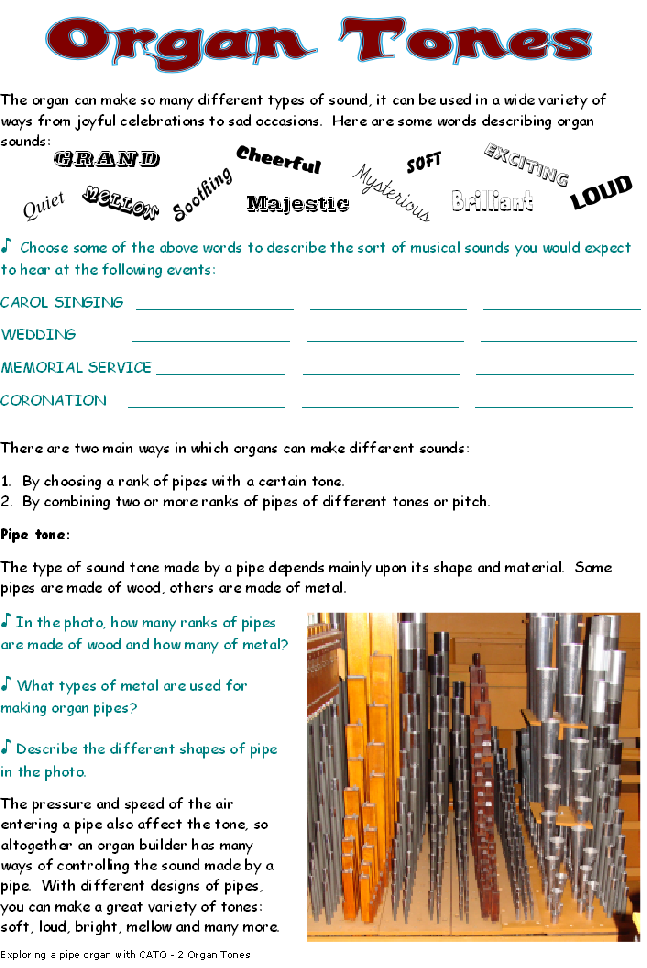
Commentary for Teachers -
This topic prompts thinking about the range of the range of musical moods and emotions which can be invoked by organ music and matching these with the variety of events and occasions for which the organ can perform. It is a challenge to express musical sounds and abstract ideas in words.
♪ Choose some of the above words to describe the sort of musical sounds you would expect to hear at the following events:
Carol singing: Cheerful, exciting, loud....?
Wedding: Cheerful, exciting, loud, majestic, brilliant, grand....?
Memorial service: Quiet, mellow, soothing, soft, mysterious....? Maybe joyful and loud?
Coronation: Grand, majestic, exciting, loud....?
Opinions will vary and this activity can be good for stimulating discussion.
The picture shows the inside of an organ which is not normally visible. Points for attention:
Orderly arrangement of pipes from large to small in rows.
All the pipes have different lengths.
Both wood and metal are used for making pipes.
The variety of shapes and materials gives a variety of different tone.
♪ In the photo, how many ranks of pipes are made of wood and how many of metal?
Metal ranks: 7
Wooden ranks: 2
♪ What types of metal are used for making organ pipes?
Lead and tin are the main metals used in organ pipes. Pure tin is sometimes used
for the highly polished display pipes at the front of the organ case. Tin is a hard
metal and the tone from tin pipes tends to be bright. However this metal is expensive
and an alloy or mixture of tin with lead is most commonly used. Very old organs
sometimes contain pipes of pure lead. The tone is less bright for such pipes and
the softness of the metal makes the pipes gradually deform due to their own weight.
Large pipes are often made out of zinc, a dull-
Lead has been used for plumbing and roofing for centuries.
Tin cans are typically made of steel plate coated with tin.
Zinc is often used as a surface layer to prevent corrosion as in this example of aluminium roof cladding.
♪ Describe the different shapes of pipe in the photo.
Cylindrical metal pipes; conical metal pipes; rectangular wooden pipes.
An important aspect of the art of organ building is the skill of combining the variables of material, shape, air pressure, air velocity and more.
The picture shows a demonstration set of pipes of different designs.
Left to right: Gedeckt, Clear flute, Viola, Principal (50% tin), Principal (30%) tin, Dopple flute, Vox humana, Trumpet, Oboe, Gemshorn
Pipes known as ‘Reeds’ contain a thin strip of brass which vibrates when air is blown through the pipe, in a similar manner to the vibrating reeds in a mouth organ or harmonica. Pipes without a reed are known as ‘Flue’ pipes.